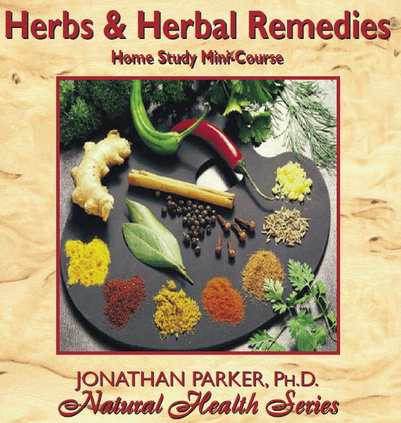Growing A Herb Garden Outdoors

Before diving in, please note: This post is for informational purposes only. If you’d like to know more about how we approach topics, feel free to check out our friendly Disclaimer Page.
Hey there, amazing readers! 
We’re committed to delivering quality posts, and your support (even just sticking around despite the ads) means everything to us. So, bear with us, and thanks for helping us keep the good vibes rolling. Now, on to the fun stuff!
TRANSLATE BUTTON AT THE END OF THE ARTICLE
Possession of an outdoor herb garden is considered by some chefs to be the pinnacle of opulence.
In addition to that, everything is going to look lovely, and in addition to that, it’s going to have a wonderful flavor. The use of high-quality ingredients that stimulate creativity in the kitchen is essential to successful cooking. The distinction may be made by cultivating herbs in a garden that is open to the air. In addition to this, performing this action is not very difficult.
Location: The position of your herb garden in your yard is of critical significance. You want it to be within walking distance of your kitchen so that it would be convenient for you to go out and grab some to eat.
Consider growing your plants in containers so that you can bring them inside quickly and easily in the event that the weather becomes bad. If you do so, you may cultivate your herbs directly on a trolley in pots, and then transfer the trolley wherever you need it to be.
Prepare The Soil: To get the soil ready, you may simply purchase soil that has already been mixed for herb and edible gardens. You may get the soil at any garden shop, such as Lowe’s, Home Depot, or Walmart. These are just a few examples. It is simple to locate and simple to make use of. If you have a composting system, you can also mix your own. To guarantee that you are successful, you will, however, need to be aware of the requirements that are specific to each plant.
Choose Your Herbs: First, decide which kinds of herbs you want to grow. You are not limited in the kinds of plants you are able to cultivate if you plant them in containers rather than directly in the ground.
In such a case, you need to educate yourself on which types of herbs may and may not be grown beside one another. It may also do wonders for your garden if you grow herbs among the other plants there as companion plants.
Start from Seeds or Plants: If you want to start with seeds, you should definitely bring them inside and give them a little bit of TLC to get them off to a good start. If you are beginning with plants, you should simply place them in the location that you have prepared for that particular plant.
Water: It goes without saying that you need water. Ensure that you have access to clean water. You could have a problem if the water in your home smells strongly of bleach or contains a significant amount of minerals. You may need to find an alternative method of watering your plants, such as collecting rainwater or using water that has been filtered to remove salt.
Prune/Trim/Pinch: Each kind of herb requires a somewhat different approach to its maintenance in terms of how it should be pruned, trimmed, or pinched. Do some research on your herb so that you are familiar with the correct way to trim it as it grows so that you can get the most out of it. Also, educate yourself on the appropriate techniques for harvesting herbs from your plants so that you can keep them thriving for an extended period of time.
At long last, you may savor the fruits of your labor with the first harvest. Start searching for recipes that require more herbs so that you can get the most pleasure out of your outdoor herb garden. This will allow you to use your garden to its full potential. You may also choose to freeze or dry them in order to make their use convenient throughout the whole year.
Place in an ice tray and freeze. Followed by the addition of water. Simply place an ice cube into the soup or stew before serving. To dry, hang the item upside down in a well-ventilated area, and then store it in a dry, cold location.
Herbs To Grow In Your Spring Garden
Start an herb garden if you are seeking a solution to improve the taste of your meals that is not only simple but also easy and doesn’t cost too much money. Herbs need little in the way of attention and don’t take up a lot of space.
Planting herbs in pots, rather than directly into the ground, ensures that the soil will have enough drainage. Because of this, you will also be able to bring them inside during the months when the temperature is lower.
Basil – Basil has a taste that is both warm and spicy, making it an excellent complement to stews and sauces. Making pesto is the most efficient way to use up leftover basil. In the late spring, basil seeds may be planted directly into the garden, although the plant requires a lot of sunshine.
Chervil: Chervil is a kind of plant that has a taste profile that is comparable to that of anise seeds. Because it is a less common herb, you won’t often find it in grocery shops, but adding it to your morning eggs will give them a wonderful taste boost. Because it is susceptible to freezing temperatures, chervil should only be planted when there are no indications that frost is on the way.
Cilantro: Cilantro Guacamole and salsas both benefit greatly from the addition of cilantro as an herb since it imparts a pleasantly crisp taste. In addition to aiding digestion, cilantro is an excellent source of potassium. To avoid getting the two herbs mixed up, you should be sure to store your cilantro and parsley in different containers. Find the part of the garden that gets the most sunshine and has soil that drains well, and plant there. Because cilantro is susceptible to drought, you must ensure that the soil is wet at all times.
Epazote: If you prefer to prepare Mexican cuisine, you should grow epazote in your garden since it is quite doubtful that you will be able to locate it at a supermarket. It has a taste that is similar to the beans and stews that are served in Mexican restaurants, which are peppery and minty, respectively. Plant epazote in soil that has good drainage and is exposed to full sun as soon as there is no longer a risk of frost damaging the plant.
Dill: Dill is a popular seasoning in Europe, particularly for enhancing the taste of fish, potatoes, and dairy products. Pickling is the use that brings it the greatest fame. It has a fragrance and taste that are reminiscent of fennel, but more earthy. Because dill seeds do not respond well to being transferred into new environments, you will want to sow them directly into your garden.
Lemon Balm is a plant that comes from the mint family and has a subtle lemon scent. Because it soothes an upset stomach and relieves bloating, lemon balm is often utilized for its therapeutic properties. The seeds of lemon balm may be started inside throughout the winter months, and the plants can then be moved outside at the end of spring.
Mint: You may give your tea or water a pleasant jolt of flavor by using mint, which is a herb. Even lamb is delicious when paired with mint. Growing mint, like growing the vast majority of other herbs, is best done in a container that has drainage holes on the bottom. Not only that, but it has a propensity to take over any area that is accessible, which is why cultivating it in a pot is the best way to keep it under control and manageable.
Parsley: The majority of the time, parsley is used as a garnish; nonetheless, it has a significant impact on a dish’s nutritional profile and may be included in almost any recipe. Parsley requires soil that is wet and nutrient-rich, and it may thrive in either direct sunlight or some shade.
To ensure that you get the most out of your efforts this year, you should put each plant in its own individual container and give it plenty of space, light, and water. Planting herbs in individual terracotta pots gives you the flexibility to plant anything you choose and to relocate the pots as necessary, making this a terrific concept for herb gardening.
Supplies You Need To Grow Herbs
When you have made the decision to begin cultivating herbs, the next step that you need to take is to determine the materials you will need and then go out and get those goods. It’s possible that you’ll discover some items around the house, at second-hand shops, or even in the garden supply store that you may put to good use. In addition to that, it goes without saying that you may shop for goods on Amazon.
Seeds: If you want to grow herbs from seeds, you can buy them at many different locations, including the grocery store, Home Depot, Lowe’s, and more traditional local garden businesses. If you want to grow herbs from seeds, you should start by purchasing seeds.
However, you can also get them online through Amazon kits, such as this 5 Herbs from Organic Seeds package. Another option is to order them directly from Amazon.com. The most essential thing is to get seeds from a reputable source.
Space: You are going to want some room in order to cultivate some plants. If you intend on doing it indoors, you’ll need shelving that gives you the option of relocating the plants to a window where they can get direct light or providing space where grow lights can be installed. If you prefer to work in the fresh air, you can even grow your herbs in a little greenhouse that can be moved from place to place.
Pots: Herbs should be grown in containers that are easy to water since this is the most important factor in their success. Because they are porous and can absorb water, terracotta pots are an excellent option for planting seeds because they will help prevent the seedlings from drying out. On the other hand, you really must take care not to overwater the plant in any case.
Potting Soil: Finding the Proper Potting Soil You can get the right soil at any garden supply shop or even in the garden center at Walmart. However, in most cases, you can get away with using pre-mixed potting soil for your herb garden. The soil mix really does depend on precisely what you’re going to be growing.
Plant Fertilizer: Fertilizer for Plants Even if herbs do not need a significant amount of fertilizer, it is still a good idea to provide it for them on occasion. You don’t want to overdo it, but it will result in a plant that is very healthy.
The kinds of herbs that you are growing, as well as the environment in which you are cultivating them, will determine the kind of fertilizer that you should use. If you want the best results, you should try to utilize organic fertilizers.
Water: It goes without saying that you will need water. However, one thing that a lot of people aren’t aware of is the fact that the water that comes out of the tap isn’t always the best option. You may want to make sure that you have access to water that has been filtered if the water where you live has been extensively treated or if it contains a significant amount of limestone.
Sunlight: While certain herbs, like basil, must be grown in direct sunlight, others don’t have this need. To find out how to provide the best possible care for the specific herb that you are growing, you will need to educate yourself as much as possible about that herb. Grow lights are another option for those who do not have access to natural sunlight since they may help replicate the benefits that the sun provides to the plants.
Darkness: The majority of people are unaware of the fact that your herb plants also need darkness in order to complete the plant’s day cycle and develop in an appropriate manner. Be sure that there are no floodlights aimed towards your garden area if it is located outdoors, and that all of the lights within the home are turned off when it becomes dark.
After that, the only things you’ll need to cultivate your own herbs are your own two hands and the will to figure out how to accomplish it. It may take some experience to get it perfect, but growing your own herbs at home is a fantastic way to liven up your cuisine without spending a lot of money. The only drawback is that it may take some time to get it started.
Latest Posts
- Your February 13, 2025 Daily Horoscope: Cosmic Guidance for Every Sign
- Are You a Starseed? Signs You Might Be One
- Daily Horoscope for February 12, 2025: Zodiac Insights & Vibes
- Dream Manifestation with Astrology and Rituals
- Astrology Rituals to Manifest a Promotion or Dream Job

The Enlightenment Journey is a remarkable collection of writings authored by a distinguished group of experts in the fields of spirituality, new age, and esoteric knowledge.
This anthology features a diverse assembly of well-experienced authors who bring their profound insights and credible perspectives to the forefront.
Each contributor possesses a wealth of knowledge and wisdom, making them authorities in their respective domains.
Together, they offer readers a transformative journey into the realms of spiritual growth, self-discovery, and esoteric enlightenment.
The Enlightenment Journey is a testament to the collective expertise of these luminaries, providing readers with a rich tapestry of ideas and information to illuminate their spiritual path.
Our Diverse Expertise
While our primary focus is on spirituality and esotericism, we are equally passionate about exploring a wide range of other topics and niches 

To ensure we provide the most accurate and valuable insights, we collaborate with trusted experts in their respective domains 
Our blog originally focused on spirituality and metaphysics, but we’ve since expanded to cover a wide range of niches. Don’t worry—we continue to publish a lot of articles on spirituality! Frequently visit our blog to explore our diverse content and stay tuned for more insightful reads.


































































